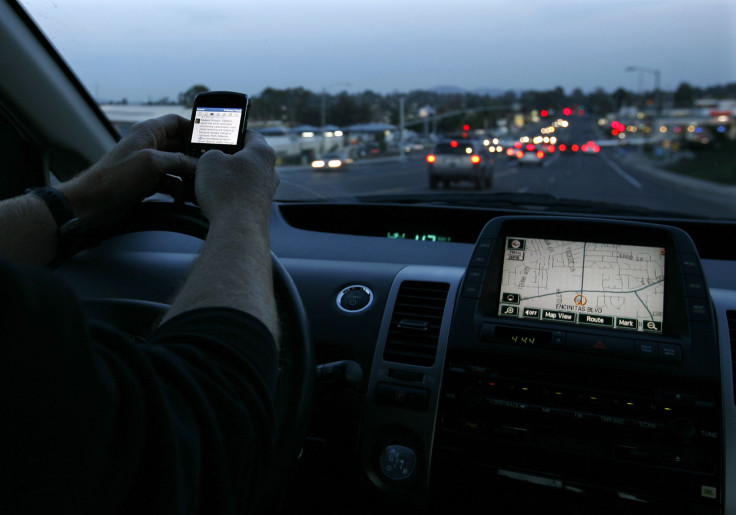Texting And Driving Accidents Would Decrease If Everyone Understood The Dangers

Distracted driving, just like drunk or buzzed driving, causes car accidents. Yet, unfortunately, this behavior is on the rise. A new study proves a little knowledge might change all that. Researchers discovered a simple intervention, which raised awareness about the danger of using a cell phone (or other device) while driving, reduced the incidence of distracted driving by 50 percent.
"We are looking to start DADD, doctors against distracted drivers, and initiate a big push for a national outreach campaign against distracted driving," said Dr. Bellal Joseph, a trauma surgeon, associate professor of surgery at the University of Arizona and senior study author.
Hair-Raising Stats
About 421,000 people became injured and 3,328 died in accidents involving distracted driving during 2012, according to the National Highway Transportation Safety Administration. Generally, about 80 percent of crashes and 65 percent of near-crashes involve some form of driver inattention immediately before the event. A previous study examining the natural behavior of 100 people in their cars found drivers who are more frequently distracted are more likely to be involved in an accident. Predictably, the same study showed how using a cell phone is the most common distraction.
The surprise, though, is this: The number of crashes and near-crashes attributable to talking or listening is nearly identical to the number caused by dialing. This may be due to the fact that drivers understand dialing to be dangerous, so they risk dialing their phones less often than just talking. Reaching for a moving object multiplied drivers’ risk of an accident by 9.0; looking at something outside the car by 3.7; reading by 3.0; and applying makeup by 3.0. Drowsiness increases the risk of crashes or near-crashes by at least a factor of four, though it may not be reported in police documents.
Understanding these statistics, authors of the current study conducted a phased intervention for health care providers at the University of Arizona. In the first phase, researchers stationed outside an employee parking garage observed the incidence of distracted driving — either talking on a cell phone or texting behind the wheel — among hospital employees. They recorded incidence of distracted driving over a period of a week.
Using A Cell Phone Equates to 'Legally Impaired'
The second phase consisted of a survey where hospital employees were questioned about their overall knowledge of distracted driving as well as their driving habits, including whether or not they texted or used a cell phone while driving. During this phase, the researchers also explained why using handheld devices while driving is dangerous. In terms of accidents, using a cell phone is equivalent to driving “legally impaired” with a blood alcohol level of 0.08 percent.
Five seconds, the researchers also explained, is the average time texting steals a person's attention from the road. If you are traveling at 55 mph, that's like traveling the length of a football field blindfolded.
After posting banners and handing out informational brochures about distracted driving, researchers conducted a post-intervention survey to find out how many people were affected by what they had learned. For phase three, researchers returned to the hospital parking lot where they once again observed and recorded the driving habits of hospital employees for another week. Finally, six months later, respondents participated in a follow-up survey.
Overall, researchers collected 6,639 observations of distracted driving observations pre-intervention: 4,220 post-intervention and 4,557 six months post-intervention. This equates to a 50 percent decrease in distracted driving following the intervention, a reduction that held even after six months. While 35.5 percent of respondents admitted to driving distracted, 4.5 percent had been involved in a wreck because of it.
“People have a lack of insight about the true dangers of texting and driving,” Joseph said. “They know it's not safe, but they really don't understand the high level of peril it truly represents.”
Source: Joseph B, Zangbar B, Pandit V, et al. Clinical Congress of the American College of Surgeons. 2014.



























